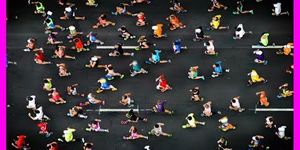NASA's James Webb Space Telescope Completes Cryogenic Testing
NASA’s James Webb Space Telescope is well on its way to succeeding the Hubble Space Telescope as one of the most powerful space observatories ever launched, but not without a plethora of tests to guarantee long-term reliability after it reaches space.
One of the most recent of such tests involved packing the heart of the James Webb Space Telescope inside of NASA’s historic Chamber A in Houston, Texas, where it endured several weeks of cryogenic testing and a primary mirror alignment test to ensure that it could hold up to a cold and airless outer space environment.
Image Credit: NASA/Chris Gunn
NASA officially brought the cryogenic testing to an end on November 18th, which meant opening the chamber’s massive 40-ton vacuum-sealed door and exposing the James Webb Space Telescope’s guts to the Earth's natural climate once more.
"After 15 years of planning, chamber refurbishment, hundreds of hours of risk-reduction testing, the dedication of more than 100 individuals through more than 90 days of testing, and surviving Hurricane Harvey, the OTIS cryogenic test has been an outstanding success," noted project manager Bill Ochs from NASA's Goddard Space Flight Center in Greenbelt in Maryland.
"The completion of the test is one of the most significant steps in the march to launching Webb."
Related: Take a gander at the James Webb Space Telescope's massive primary mirror
The James Webb Space Telescope utilizes the infrared light spectrum to observe distant objects in space, so keeping it cold is imperative to prevent unwanted interference in its data. The simulated outer space environment inside of Chamber A helped scientists validate that the James Webb Space Telescope’s equipment will operate as expected in space-like conditions.
When in space, the James Webb Space Telescope will operate around -387º Fahrenheit, but one part of the unit known as the mid-infrared instrument (MIRI) will need to be kept even colder for proper operation. The James Webb Space Telescope comes equipped with a cryocooler that will maintain this part’s temperature at approximately -447º Fahrenheit.
Being that the James Webb Space Telescope passed some of the most critical tests with flying colors already, it will move on to complete assembly and a few additional tests before preparing for launch in the Spring of 2019 (delayed from the original estimate of 2018).
As you can probably imagine, astronomers are getting antsy to use the James Web Space Telescope to its full potential after it launches. Not only can it help validate several curious findings made by Hubble previously, but it also should open the door to a new age of space observation.
The James Webb Space Telescope could reveal some of the deepest and darkest secrets about our universe that we have yet to discover; this, folks, is why science rocks.
Source: NASA









